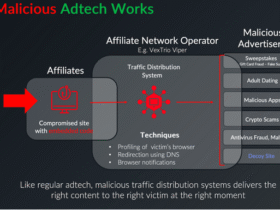Any organization can suddenly face a reputation crisis, damaging its brand. Effective corporate governance is essential in maintaining a good reputation by ensuring transparency and adherence to best practices. Understanding the nature of such crises and the importance of rebuilding trust are crucial first steps in recovery.
What is a Reputation Crisis?
A reputation crisis arises when a brand’s image is significantly compromised due to data breaches, negative media, or cybersecurity issues. These crises can lead to financial losses, erode customer trust, impact sales performance, and significantly decline market value. Protecting a brand’s reputation is critical, and effective crisis management is essential for mitigating damage and rebuilding trust.
Why is Reputation Rebuilding Important?
Rebuilding reputation is essential for organizations looking to restore their public image and regain trust after a crisis. A strong reputation influences customer loyalty, financial stability, and marketing efforts. Strategic decisions during this time can have a lasting impact, positioning companies for long-term success.
How to Assess the Reputational Damage?
Assessing the damage after a reputation crisis is crucial for understanding its full scope. This involves using brand monitoring tools, analyzing stakeholder engagement, and evaluating financial repercussions. Engaging significant stakeholders, such as business partners, investors, and customers, helps inform them how to address the situation. Gathering feedback from customers and employees also provides a comprehensive view of the crisis’s effects on the business.
Evaluate the Severity of the Reputation Crisis
Evaluating the severity of a reputation crisis is crucial in determining the best course of action to repair and rebuild. This involves assessing the damage’s extent, identifying the crisis’s root cause, and understanding its impact on key stakeholders.
What Steps to Take Immediately After a Crisis?
Taking immediate action after a crisis is essential for minimizing damage. Companies should implement a clear crisis response plan and effectively communicate with primary stakeholders such as business partners, investors, and customers. Utilizing social media channels for swift communication is also critical. A well-coordinated action plan helps rebuild public trust and keeps stakeholders informed throughout recovery.
How to Communicate with Stakeholders?
Effective communication during a reputation crisis is vital for rebuilding trust. Organizations should adopt a communication strategy emphasizing clarity and empathy to address concerns. Personalized messages, regular updates, and structured feedback mechanisms help foster engagement and manage expectations. Additionally, leveraging brand ambassadors can enhance the message, demonstrating proactive engagement.
How to Address Negative Reviews and Publicity?
Addressing negative publicity is crucial in minimizing reputational damage and shaping public perception. A proactive PR strategy that responds swiftly to media inquiries and manages negative reviews helps protect brand integrity. Monitoring media channels for potential threats and preparing timely responses are essential for managing negative press.
How to Handle Legal Issues?
Handling legal issues during a reputation crisis requires corporate executives to balance legal strategy with transparent communication to protect the organization’s interests. A proactive approach involving legal advisors and PR crisis experts is crucial for evaluating legal risks while keeping stakeholders informed. For instance, insider trading can lead to significant reputation damage, as seen in the case of Martha Stewart, but managing the crisis effectively can help rebuild one’s image. Establishing a legal task force, aligning team members on strategies, and maintaining a clear communication plan help mitigate misinformation and prepare for media inquiries. Striking the right balance between legal considerations and open dialogue is critical to effective reputation management and maintaining trust.
What Strategies Can Be Used for Reputation Management and Rebuilding?
Rebuilding a brand’s reputation after a crisis requires strategically restoring trust and aligning with corporate values. Key strategies include transparent communication, authenticity, and stakeholder engagement to foster long-term brand resilience and rebuild a personal brand. Addressing a reputational crisis is crucial, as it can significantly impact a business’s image; organizations must address immediate concerns and illustrate their potential for future value to rebuild trust among stakeholders. Transparency and taking responsibility are essential, as openly acknowledging mistakes and committing to corrective actions enhances public perception and trust. Apologizing sincerely and maintaining clarity in messaging is crucial for demonstrating accountability. Additionally, leveraging positive publicity and community engagement helps rebuild credibility while showcasing progress can turn skeptics into advocates. Together, these efforts form the foundation for a successful reputation recovery.
Develop a Repair Strategy
Developing a repair strategy is essential in rebuilding a damaged reputation. This involves identifying the root cause of the crisis, taking responsibility for your actions, and creating a plan to prevent future reputational damage. A solid strategy will help you regain the trust of your key stakeholders and restore your reputation.
To develop a repair strategy, consider the following steps:
- Identify the Root Cause of the Crisis: Take responsibility for your actions and identify the underlying cause of the crisis. Understanding what went wrong is the first step in preventing future issues.
- Develop a Plan to Prevent Future Reputational Damage: Implement measures to prevent similar crises. This might include revising policies, enhancing training programs, or improving oversight mechanisms.
- Engage with Key Stakeholders: Communicate with your business partners, customers, employees, and other key stakeholders to regain their trust. Transparent and proactive communication demonstrates your commitment to resolving the issue.
- Monitor and Adjust Your Social Media Response Plan: Ensure that your social media response plan effectively addresses the crisis and prevents future reputational damage. Regularly review and update your strategy based on feedback and changing circumstances.
By developing a repair strategy, you can rebuild your reputation and regain the trust of your key stakeholders, positioning your organization for long-term success.
Focus on Strong Internal Communication
Strong internal communication is essential in rebuilding a damaged reputation. It involves effectively communicating with your employees, business partners, and other key stakeholders to ensure everyone is aligned and working towards the same goal. Effective internal communication will help you regain the trust of your key stakeholders and restore your reputation.
To focus on internal solid communication, consider the following steps:
- Communicate Effectively with Your Employees: Ensure your employees are informed and aligned with your repair strategy. Regular updates and open forums for discussion can help maintain morale and commitment.
- Engage with Your Business Partners: Communicate with your business partners to ensure they know the crisis and the steps you take to address it. Their support can be invaluable in the recovery process.
- Foster a Culture of Transparency: Encourage open and honest communication within your organization to prevent future reputational damage. Transparency builds trust and helps identify and address issues before they escalate.
By focusing on internal solid communication, you can rebuild your reputation and regain the trust of your key stakeholders, ensuring a unified and effective response to the crisis.
Reinstate Core Values and Principles
Reinstating core values and principles is essential in rebuilding a damaged reputation. This involves reaffirming your commitment to your values and principles and ensuring they are reflected in your actions and decisions. By reinstating your core values and principles, you can regain the trust of your key stakeholders and restore your reputation.
To reinstate your core values and principles, consider the following steps:
- Reaffirm Your Commitment to Your Values and Principles: Communicate your values and principles to your employees, business partners, and key stakeholders. This reaffirms your dedication to ethical conduct and integrity.
- Ensure Your Actions and Decisions Reflect Your Values and Principles: Align your actions and decisions with your values and principles to demonstrate your commitment. Consistency between words and actions is crucial for rebuilding trust.
- Foster a Culture of Integrity: To prevent future reputational damage, encourage a culture of integrity within your organization. Promote ethical behavior and hold everyone accountable to the same standards.
By reinstating your core values and principles, you can rebuild your reputation and regain the trust of your key stakeholders, demonstrating that your organization is committed to doing the right thing.
How to Monitor and Track Progress?
Monitoring and tracking progress during reputation recovery is crucial for evaluating the effectiveness of employed strategies and making necessary adjustments. Effective corporate governance plays a significant role in maintaining a good reputation with stakeholders by ensuring transparency and communication. By utilizing brand monitoring tools, organizations can gauge public perception and stakeholder sentiment, providing valuable insights to guide and refine ongoing recovery efforts.
How to Maintain a Positive Reputation in the Future?
Maintaining a positive reputation requires a proactive approach that includes effective crisis management plans and fostering a strong corporate culture. Organizations must prioritize transparent communication and consistently demonstrate commitment to corporate values to prevent reputation crises and illustrate their capacity to deliver future value. Maintaining a strong reputation is also crucial for preserving market value, as a loss in reputation can lead to a significant decline in financial standing. Implementing a robust crisis management plan, conducting risk assessments, and delivering clear communication during crises are essential for resilience. Additionally, consistently delivering on promises builds customer trust, while proactive stakeholder engagement, community involvement, and feedback mechanisms strengthen relationships and enhance brand perception. This approach ensures long-term reputation success in a competitive marketplace.
Stay Compliant and Competitive
Staying compliant and competitive is essential in rebuilding a damaged reputation. This involves ensuring that your organization complies with relevant laws and regulations and is competitive in your industry. By staying compliant and competitive, you can regain the trust of your key stakeholders and restore your reputation.
To stay compliant and competitive, consider the following steps:
- Ensure Compliance with Relevant Laws and Regulations: Ensure your organization complies with relevant laws and regulations to prevent future reputational damage. Regular audits and compliance checks can help identify and address potential issues.
- Stay Up-to-Date with Industry Developments: To ensure competitiveness, stay informed about industry developments and trends. This can involve continuous learning, attending industry conferences, and networking with peers.
- Foster a Culture of Innovation: To stay ahead of the competition, encourage a culture of innovation within your organization. Innovation drives growth and demonstrates your commitment to progress and improvement.
By staying compliant and competitive, you can rebuild your reputation and regain the trust of your key stakeholders, ensuring that your organization remains a leader in its field.
Monitor and Adjust Your Social Media Response Plan
Monitoring and adjusting your social media response plan is essential in rebuilding a damaged reputation. This involves ensuring that your social media response plan effectively addresses the crisis and prevents future reputational damage. By monitoring and adjusting your social media response plan, you can regain the trust of your key stakeholders and restore your reputation.
To monitor and adjust your social media response plan, consider the following steps:
- Monitor Social Media Conversations: Monitor social media conversations about your organization to ensure you know of any issues or concerns. Tools like social listening platforms can provide real-time insights into public sentiment.
- Adjust Your Social Media Response Plan: Adjust your social media response plan as needed to ensure it effectively addresses the crisis and prevents future reputational damage. Be flexible and responsive to changing circumstances and feedback.
- Engage with Your Audience: Engage with your audience on social media to build trust and demonstrate your commitment to your values and principles. Respond to comments and messages promptly and transparently, showing that you value their input and are taking their concerns seriously.
By monitoring and adjusting your social media response plan, you can rebuild your reputation and regain the trust of your key stakeholders, ensuring that your organization remains responsive and accountable.















